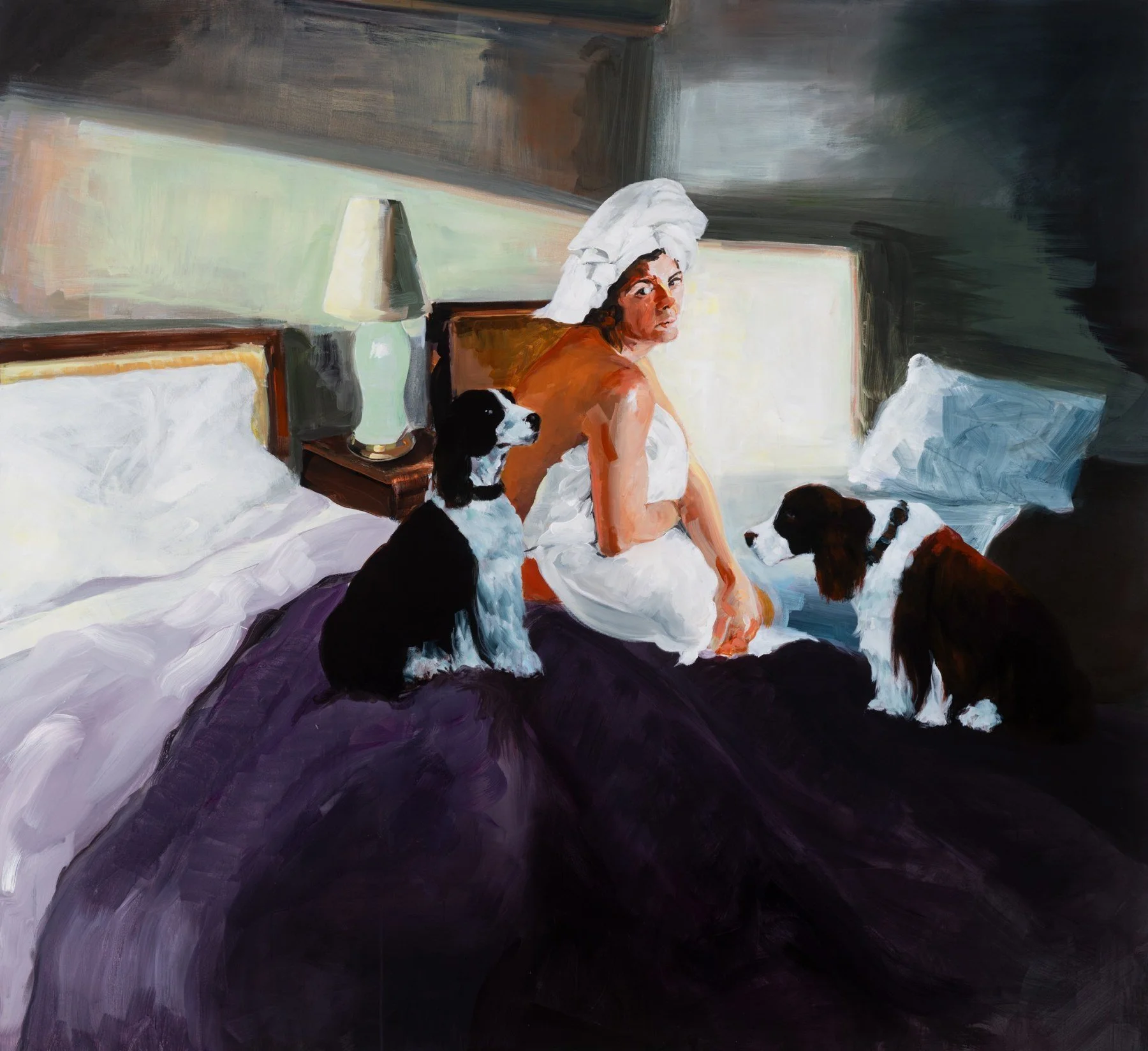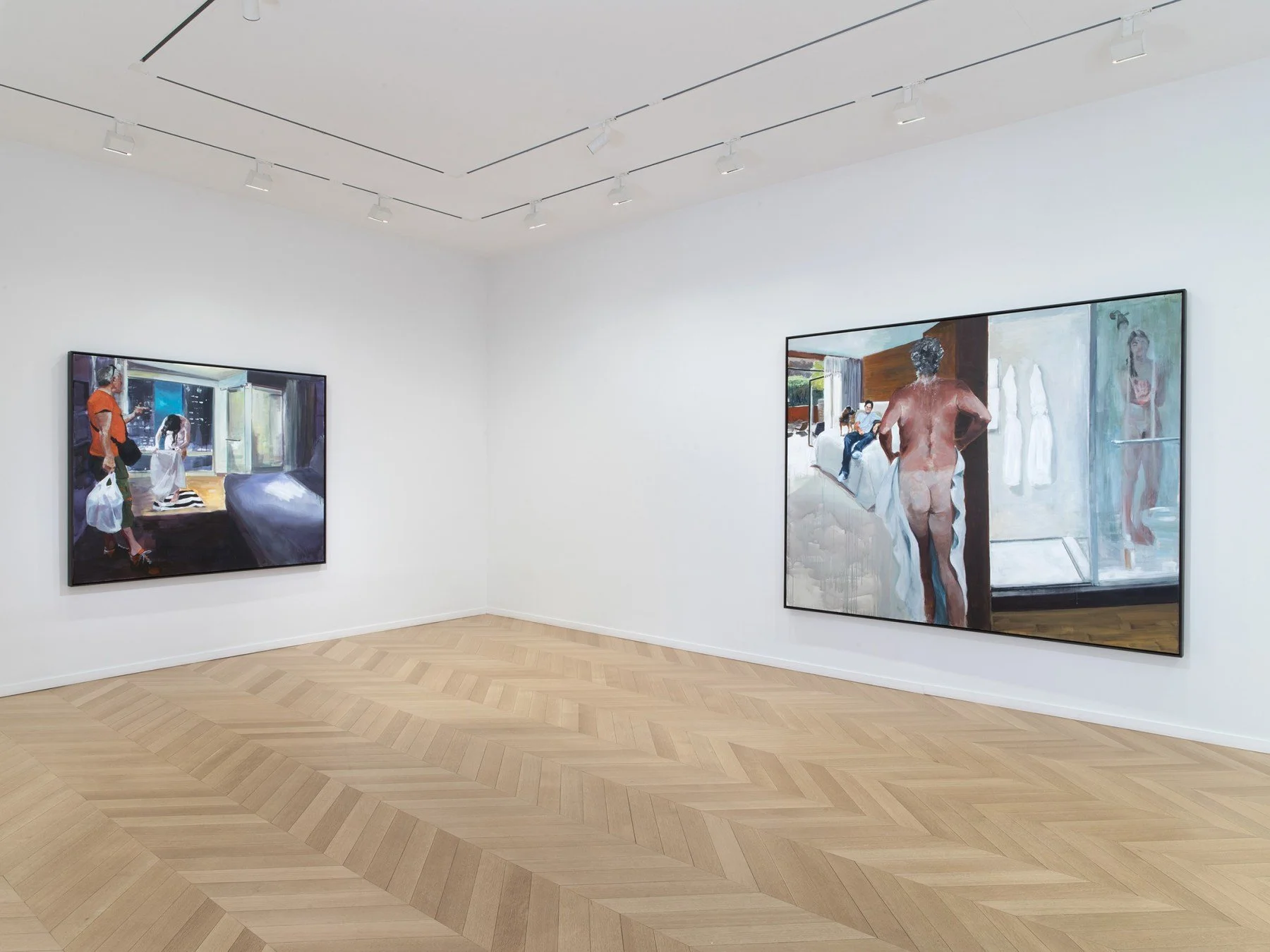ERIC FISCHL: HOTEL STORIES
Skarstedt announces an exhibition of nine new paintings by Eric Fischl, which will be on view in the New York gallery. The exhibition will mark the debut of his new series, titled Hotel Stories.
March 14 – May 4, 2024
Hotel rooms take on an array of meanings, associations, and possibilities for each of their inhabitants. For some, they feel personal and cozy, like a safe haven. For others, they’re simply a space to put their things. They can be sites of nefarious, taboo activity; a blank slate on which to place romantic ideals; or even spaces of extreme isolation and sadness. A wide range of events take place in these rooms that are not what the they supposedly promise, and Fischl explores each one of these potential outcomes in this new body of work, a perfectly fresh continuation of the ideas that have haunted his paintings for so many years.
The experience of travel is latent with a, perhaps false, sense of promise and possibility, making it a prime activity on which to project one’s innermost fantasies—one can be someone else when in a different city. Similarly, there is a certain familiarity in the experience of a hotel room: one can more or less expect the same outdated patterned carpet, drab wall art, a couple of chairs, and a bed.
Each painting vibrates with an almost tragic stillness—a feeling that the artist likens to a muffled scream. In October 7: Heading Home, for example, a smartly dressed woman, poised to go explore wherever she is visiting, is instead frozen in place with her eyes glued to the television as it emanates that classic blue glow, projecting a real-time, real-world horror right as she attempts to remove herself from the realities of life through this vacation. Although we do not see what is unfolding, we understand its darkness through the stiffness of her body.
The question of where emotions live in the body, particularly those more forbidden feelings of shame and violence, echoes across the works in the exhibition, such as in King’s Highway: Killing Time. A man sits on his bed, strumming his guitar. There is a looseness to his posture, an ease borne out of a level of self-assuredness and self-awareness. Yet, the simplicity of this serene moment is complicated by the AK-47 that rests by the window.
Dislocation is similarly present throughout these paintings, an effect Fischl partly achieves by bending the realities of time. In some, the juxtaposition of two figures who do not cohesively interact prompts the viewer to consider if they are, in fact, observing the same room across different nights and different guests.
In Snapshot of a Marriage, one person is seen holding a shopping bag, dressed and ready to go, pointing towards the door; the other, fresh out of the shower, is about to put her hair in a towel. Is he ushering her to get ready so they can head back out, or do they even see each other at all? These kinds of questions reveal that we are simultaneously always alone and never alone—a pervasive sentiment that can be found in even the most quotidian of moments.


